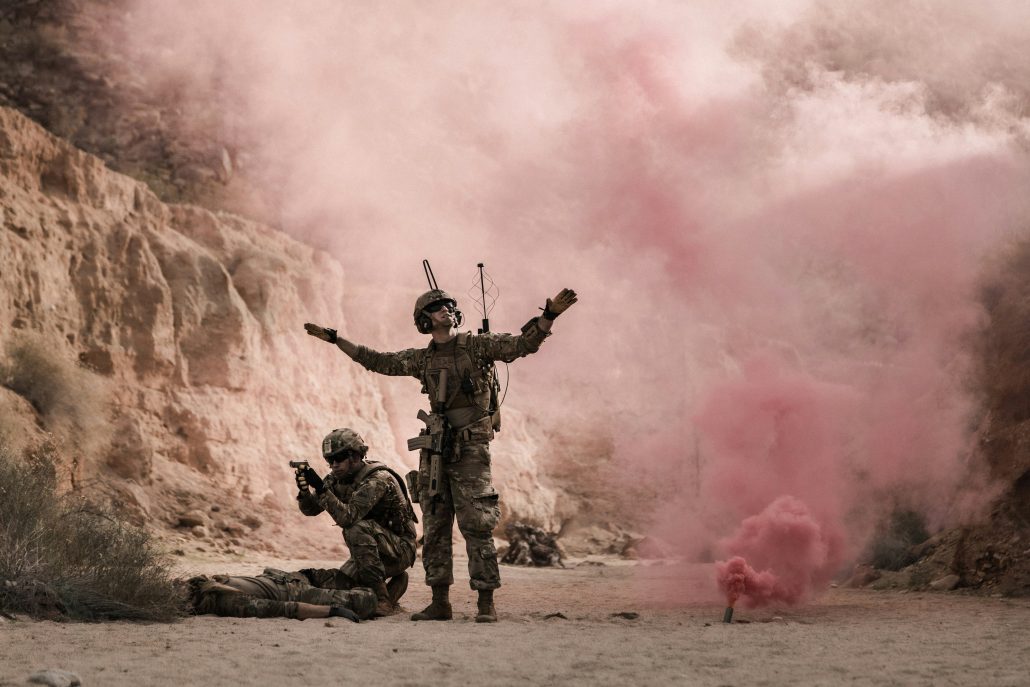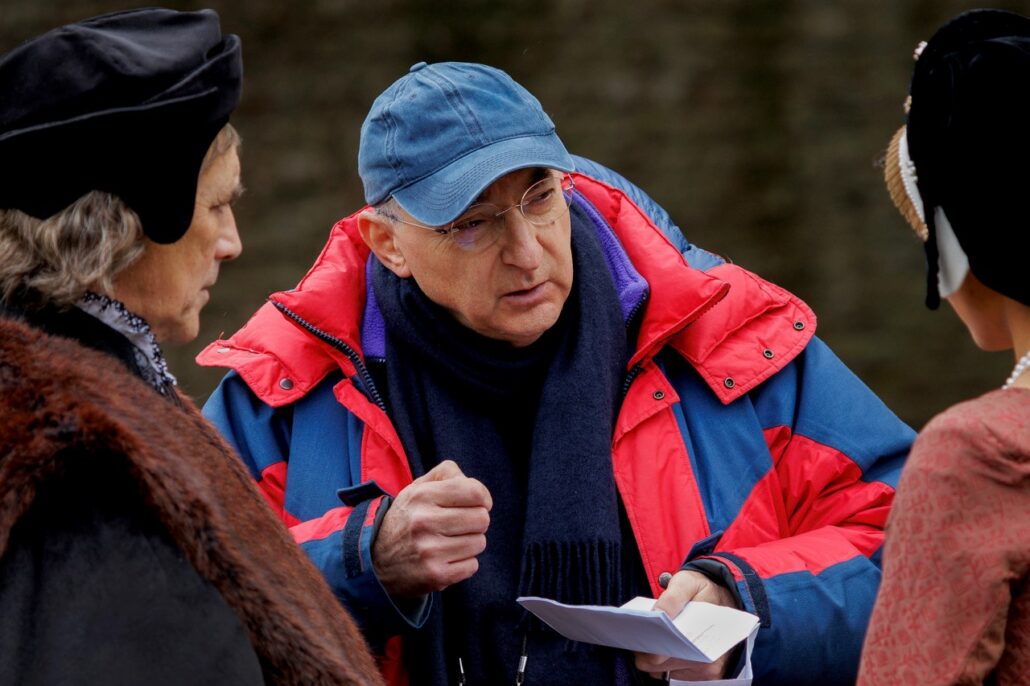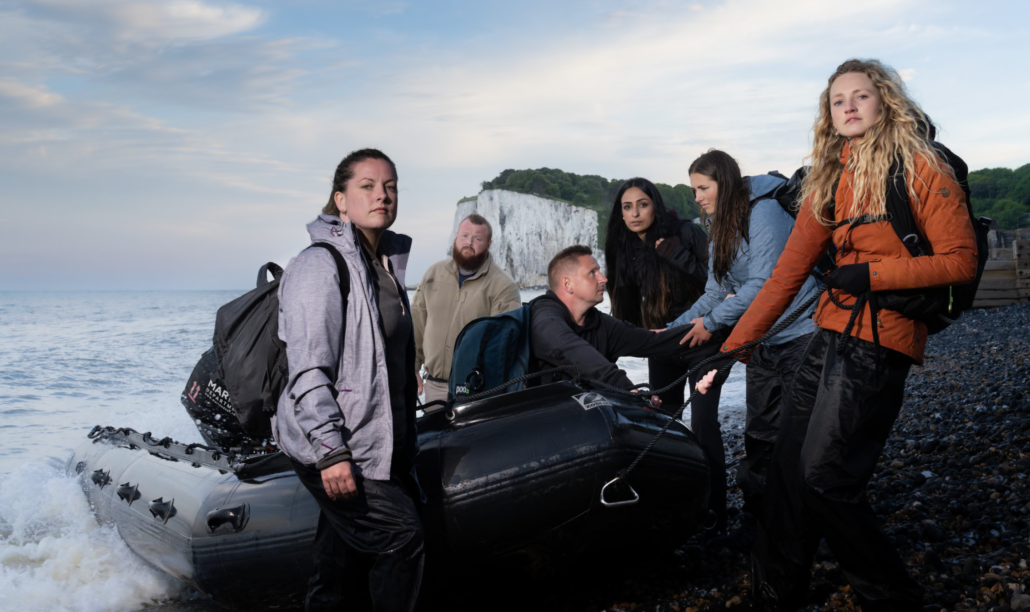
When journalists talk about a code of ethics, they are generally referring to a commitment to honesty, balance and fairness in their reporting. Which sounds straightforward enough but in recent years has proven much less so. We live in a time when, to use a phrase made infamous a senior American political aide, many people believe in the notion of “alternative facts”.
In October it was reported that following its coverage of the conflict in the Middle East, the BBC had received more than 1,500 complaints about bias, roughly evenly split between those who thought the broadcaster’s coverage was anti-Israeli and the those who thought it was anti-Palestinian. I have colleagues who argue that the equal split suggests that the BBC is probably getting its coverage about right but they’re under no illusion that it will assuage the feelings of those who feel discriminated against. Nor will it make it any easier for journalists or editors working on reporting the news. As Deborah Turness, CEO of BBC News and Current Affairs has described it “This war is one of the most complex and polarising stories we have had to cover”.
As it should, the scale and the tragedy of the ongoing conflict in Israel and Gaza has once again put the responsibilities of journalists and media organisations into sharp relief. Alongside the commitments to honesty and integrity at heart of journalistic ethics are also acting in the public interest and minimising harm. At the Sandford St Martin Trust we often focus on ethics, belief and religion and how they are reflected in the news, but at times like these, we remember that they are more deeply embedded than that – something which our colleagues at the Institute for Human Rights and Business (IHRB) have also been contemplating. Reproduced here, with their kind permission is a blog written by Salil Tripathi, a policy advisor and IHRB’s Senior Advisor, Global Issues and first published in October on their website.
What human rights responsibilities do media companies bear during conflict?
by Salil Tripathi, Senior Advisor, Global Issues, IHRB
On 7 October, Hamas extremists staged a surprise raid into Israel, in which more than 1,000 people were killed, and over 200 hostages were taken. Israel’s response has so far reportedly killed over 3,000 people in Gaza. A grave crisis is escalating, with growing fears of wider regional conflict.
These unfolding events, and the many uncertainties around what is happening, including blame over the deaths of civilians, as was seen in an explosion on 17 October that shattered a hospital in Gaza, are reminders that truth becomes the first casualty in conflict.
What human rights responsibilities do media companies bear at a time like this? And when they fail, whose role is it to set things right? In the fog of conflict, it is natural to expect media organisations to uncover the truth, but to do so they must be robustly impartial and neutral. However, such neutrality does not mean repeating claims on either side of the conflict, saying “one-side-says-this-and-the-other-side-says-that.” In the process, they risk undermining human rights such as life, privacy, the right to seek, receive and impart information as well as free expression, and in some instances, become tools of propaganda.
The rise of misinformation and disinformation
A huge photograph in the Times showed wounded children with a bold headline that spoke of the deaths of Israeli children, but the caption, in small print, accurately described the children as being Palestinian. As with legal documents, many people don’t read the fine print. Intentional or not, actions such as these – for which the Times alone is not responsible – have eroded media credibility. This gives fuel to conspiracy theorists and disseminators of propaganda and lies to dominate airwaves and the Internet with misinformation (wrong information provided inadvertently) and disinformation (deliberately distorted information spread to shape a narrative).
Another set of media companies – social media platforms – are particularly vulnerable in this regard. They argue that they simply cannot control everything being said on their platforms. Anyone with a laptop and a smart phone can now claim to be a citizen journalist, present images of destruction, interview people on the scene, and take at face value what they are being told, and what they broadcast can go viral online. To be sure, crowd-sourced information is often useful during periods of great stress and strife, as people are able to learn where relief is provided or which zones are safe. But trouble-makers are several steps ahead, and can place misleading information, exposing civilians to greater vulnerability. By doing little to restrain the flow of lies on platforms, social media platforms run the risk of being complicit in the abuses that follow.
What can be done to address this difficult reality? The European Union has already begun to inquire into the role of X, the company formerly known as Twitter. Meta, which owns Facebook and other platforms, has redoubled its efforts to weed out falsehoods, having learned it the hard way after its experiences in Myanmar, Sri Lanka, India, and elsewhere, where messaging services and platforms were used to pit communities against one another. When people begin to rely on the spoken word and on the message forwarded to them on their phones through social media, tightly-edited and seductively produced videos skew reality. People in Myanmar believed their army’s use of images from African conflicts to warn them about Rohingyas. Hindu lynch mobs killed Muslims in India after seeing misleading images through WhatsApp.
In the present conflict, X, which dissolved its trust and safety council (disclosure: IHRB was a member of one of the disbanded groups within the council) has essentially outsourced fact-checking to a feature called ‘community notes,’ which relies, with little quality control, on the goodwill of individual users to provide contextual information correcting disinformation or misinformation. Such an approach is doomed to fail, as malicious players know how to exploit weaknesses and regulatory gaps. As the journalist David Patrikarakos has shown in his book about Ukraine, War in 140 Characters: How Social Media is Reshaping Conflict in the 21st Century, troll farms can create havoc in the build-up to an armed conflict.
What is published or said (or banned or concealed) can impact many human rights
- The right to life: as the example of Radio Television Libre des Mille Collines in Rwanda shows, the radio station in Rwanda which operated in 1993-94, was singularly blamed for unleashing propaganda that led to the massacre of hundreds of thousands of Tutsis. Its main financier, Felicien Kabuga, was finally arrested in 2020, but in 2023 the Hague Tribunal dismissed the case against him, as due to dementia he was declared unfit to face trial.
- The right to privacy: Lurid images of victims and survivors are often published without the consent of the individuals involved, and without regard to their right to privacy. Public interest often necessitates such publication, both to inform the public, invoke revulsion against violence, and create a database of evidence for future prosecutions. YouTube has long believed in publishing uncomfortable images in videos which serve an archival purpose, so that historical record is not distorted.
- The right to freedom of expression: Newspapers and magazines in some countries block opinions inimical to what the establishment wants. But public discourse is distorted when inconvenient and contrarian views are not aired. Governments don’t help matters – European cities have already begun banning rallies by those sympathetic to the Palestinian cause, and Litprom, a German literary organization that was to honour the award-winning Palestinian writer Adania Shibli, on its own cancelled the ceremony that was to take place at the ongoing Frankfurt Book Fair.
- The right to seek, receive, and impart information: In an age of rapidly diminishing attention span, providing context is crucial. But it is increasingly difficult for anyone to get an accurate account of what is going on. On top of that, in the current conflict, telecom infrastructure in Gaza has been severely destroyed, blacking out communication access. Internet and telecom access in Gaza must be restored, so that the local population, facing the unprecedented demand by Israel to shift southward or face consequences, can get crucial information that can help families reunite or save lives.
Media companies’ responsibilities
So what should we expect of media companies in times like these? Clearly, there are two kinds of media companies involved. Traditional media companies have their editorial processes and codes of conduct to present information for their audiences. But many traditional broadcasters have blurred the line dividing facts and opinions. Some are also accused of suppressing facts that interfere with the publication’s thinking. Erosion of media credibility, and belief in alternate media platforms is one consequence.
At the same time, social media platforms want to have it both ways: they want the attention of their audiences (to generate more advertising revenue) keep them glued to their sites without accepting responsibility for the content they carry. It has its advantages: it allows dissidents to voice their opinions against governments that disregard human rights. But it also provides space to purveyors of falsehoods, which can have dangerous consequences during armed conflict. Furthermore, some social media platforms claim to uphold free expression, but meekly comply when powerful governments order certain content to be taken down.
The roles of traditional media companies and social media companies are different, but their impacts on civilians and their audiences are not dissimilar.
First, we must recall that these companies have human rights responsibilities, and are also vital public sources of information that can advance freedom of expression and information as enabling rights, which help realise other rights. Media companies are not meant to play the role of an arbitrary censor who get to decide what’s good for their audiences. They should abide by the prevailing law, but since some governments apply such laws arbitrarily or selectively, including blocking access to content they don’t like in the name of preventing terrorism or protecting national security, which in many instances suppresses free speech, media companies should conduct their own heightened due diligence during periods of conflict to sift through the orders they receive. That means identifying human rights risks and consulting widely with affected parties, free speech specialists, academic and legal experts, civil societies, and in particular vulnerable groups affected by propaganda. They should verify what they publish, permit all sides to present their version of stories, and resist the temptation of crafting a narrative that plays into the hands of conflicting parties. Media companies should also be prompt in publishing retractions and corrections prominently when they get facts wrong, and apologise or offer other appropriate remedies through their own grievance mechanisms or by complying with court orders. And when governments make unreasonable demands to suspend access to sites or the Internet, they should resist, unless the demand is from a legally authorised entity, and is necessary, time-bound, proportionate, non-discriminatory, and reasonable.
The renewed Middle East conflict is not the first, nor will it be the last conflict in which truth will get manipulated. For millennia, military commanders and politicians have suppressed truth or suggested falsehoods, to build a stronger case for their own belligerence.
Today, growing public skepticism of mainstream media, combined with the growing use of deep-fakes and authentic-looking texts emerging through artificial intelligence, is making warfare through words and images ever more menacing. Media companies have taken steps to develop their own codes of ethics on how to report conflict, even in the digital age, and media organisations have detailed guidelines specific to regions on protecting sources and protecting the reporters and photographers at the front-line.
Those are necessary and important standards that apply to all. But there is so much more to be done to protect audiences. Media organisations have their work cut out – to examine their conduct, continually assess their impact on their audiences, and train their reporters so that their actions do not lead to civilians being harmed during armed conflict. These and other steps are urgently needed, and would demonstrate that the actions of all involved in media are consistent with human rights responsibilities.
* This article first appeared on the Institute for Human Rights and Business website: What human rights responsibilities do media companies bear during conflict? | Institute for Human Rights and Business (ihrb.org) and we are grateful to IHRB and Salil Tripathi (Senior Advisor, Global Issues, IHRB) for permission to reproduce the article here.







Leave a Reply